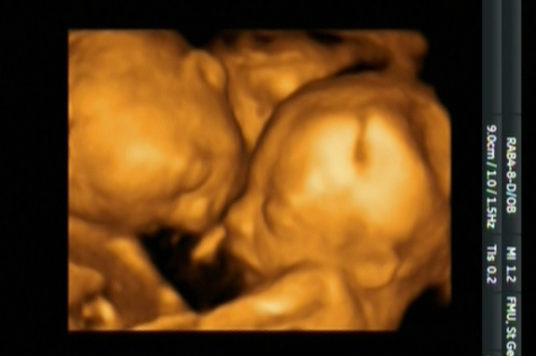Ideal time to deliver twins is discovered
New data points way to improving survival rates for twins and multiple births
Data1 published today in a clinical paper in the BMJ suggests that survival rates for twins and multiple births could be significantly improved if twins were delivered after 36 weeks rather than earlier. The study was a multi-national study and co-authored by Baskaran Thilaganathan, Professor of Fetal Medicine, St George’s Hospital and Shakila Thangaratinam, Professor of Maternal and Perinatal Health, Queen Mary University London.
The UK has a poor record in stillbirths and neonatal mortality in single and multiple births in comparison with other European nations. A report2 in November 2015 by the Twins and Multiple Births Association (TAMBA), the national charity for multiple births revealed a twin birth was twice as likely to be stillborn as a singleton baby and almost five times more likely to die in neonatal care. Furthermore, figures from the Office of National Statistics (ONS) show that stillbirths of multiple births rose by 13.6% between 2013 and 20143.
Professor Baskaran Thilaganathan of the Fetal Medicine unit at St George’s Hospital, London said, “Where there are no complications, twin pregnancies are often delivered early in an attempt to prevent stillbirth but delivering babies early which are not fully mature pre-disposes them to conditions such as cerebral palsy, respiratory deficiencies, heart murmurs, jaundice and eye problems or even death”.
“However, with the high number of deaths and morbidities associated with delivering twins it has been imperative to find the optimal time to deliver twins. When we looked at data from 32 studies over the past 10 years, we found that the optimal time to deliver dichorionic pregnancies (where each fetus has a separate placenta) was from 37 weeks. We also showed that the evidence did not support the current practice of routine delivery of monochronionic pregnancies (where the placenta is shared) before 36 weeks. There are other factors too which can reduce stillbirth, neonatal deaths and morbidity, such as implementing NICE guidelines on antennal care. We have followed the guidelines rigorously at St George’s and, as a result, we have among the lowest rates of twin stillbirth and neonatal deaths in the UK. If we can follow the optimal timing of birth and improve prenatal care in twin pregnancy, we can significantly improve the situation for babies, families and the cost to the NHS”.
-Ends-
For more information, please contact our press office on 020 8266 6128 or contact our press officer Anne Diamond directly on anne.diamond@stgeorges.nhs.uk / 0797 128 5106.
Notes to editors:
The researchers analysed the results of 32 studies, published within the past 10 years, of women with uncomplicated twin pregnancies that reported rates of stillbirth and neonatal mortality (defined as death up to 28 days after delivery) at various gestational ages after 34 weeks.
Overall the studies included 35,171 twin pregnancies (29,685 dichorionic and 5,486 monochorionic). Study design and quality were taken into account to minimise bias.
One of the most common causes of pre-term labour in twin births occurs when the cervix contracts or dilates before the 38th week of pregnancy because of overcrowding in the uterus.
The National Institute for Health and Care Excellence (NICE) introduced guidance for multiple pregnancy in 2015 and quality standards in 2016 to reduce the rate of multiples stillborn and dying in neonatal care.
However, the TAMBA report reveals that, four years later, only 10-18% of UK units have implemented these guidelines in full. Research shows that when the NICE guidelines are implemented in full, the rate of stillbirths, neonatal deaths and C-sections is reduced by up to a third.
References:
Prospective risk of stillbirth and neonatal complications in twin pregnancies: systematic review and meta-analysis. BMJ.
Embargo link: http://press.psprings.co.uk/bmj/september/twinpregnancies.pdf
Link once embargo lifts: http://www.bmj.com/content/354/bmj.i4353
Tamba and NCT (November 2015). Tamba and NCT Maternity Services Report: Multiple births. http://www.tamba.org.uk/document.doc?id=679
Office of National Statistics (October 2015). Birth characteristics, 2014. http://www.ons.gove.uk/ons/publications/re-reference-tables.html?edition=tcm%3A77-401556


